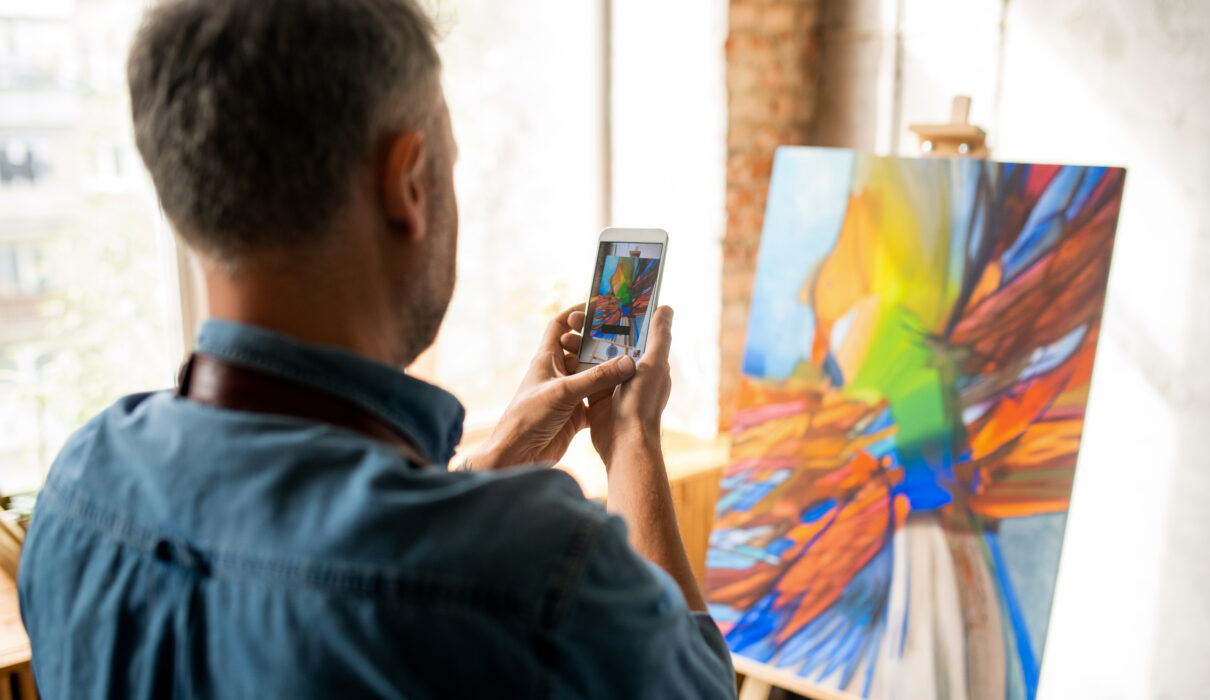Admire Van Gogh’s “The Starry Night”. Enjoy the details of Dali’s paintings. Did you know that seeing these works, whether in person or online, has a beneficial effect on your mental health?
There is evidence to support the hypothesis that contemplating works of art protects our mental health . The good news related to this discovery is that we can also enjoy art from home, by taking virtual visits to museums, accessing all the paintings in the world through images, and even appreciating sculptures in 3D.
This trend has gained momentum in times such as the lockdown we are experiencing due to COVID-19, causing the supply to also increase. In turn, this has sparked the interest of specialists in identifying and limiting the benefits derived from the contemplation of works of art.
The effect of art on health
In recent decades, numerous studies have explored the effect of art on health, either as part of a therapeutic process or outside of a clinical intervention. The accumulated evidence has become so voluminous that in 2019 the World Health Organization published a report compiling all the effects that artistic activities, active or passive, have on health.
These types of activities bring together a great combination of factors that promote health in different areas. In addition to fostering imagination and sensory stimulation, art triggers physiological and psychological responses associated with emotions.
Expressing and regulating emotions is a fundamental exercise for managing stress and mental health. Therefore, exposing yourself to these activities could reduce the risk of stress and mood disorders .
In addition, artistic activities may involve some form of physical exercise or social interaction. Socializing with other people fosters the creation of social support networks and reduces loneliness. This has been commonly associated with the delay of cognitive, functional and motor decline, as well as with the prevention and relief of other psychological disorders.
On the other hand, it can reduce sedentary lifestyle and stimulate cognitive functions , promoting learning and skill development, which has been linked to a lower risk of developing dementia and diseases such as depression. In short, whatever the format, viewing works of art can improve your well-being and health in a direct and indirect way.
Viewing artwork online also improves your well-being
As mentioned above, there are several factors or ways in which viewing works of art can improve well-being . Thus, if the visual or cognitive-emotional aspects of the experience play a relevant role, these effects could also be achieved by viewing works of art online . This is exactly what a research team from the University of Vienna has proposed.
In their study , carried out during the lockdown of the first wave of COVID-19, they had the participation of 84 people. All of them, and in a counterbalanced way, were asked to visit two virtual exhibitions from home . An artistic exhibition of Monet paintings , available at the National Gallery in London. Another, non-artistic, on the history of Japanese gastronomy.
Before and after the visits, people had to fill out a series of questionnaires on aspects such as the conditions of confinement, their interest in art and the degree of mastery, as well as instruments evaluating well-being, anxiety, mood and loneliness .
These researchers found that even in those people who had spent little time on online art exhibitions , there was a beneficial effect. Specifically, it reduced negative mood, the perception of anxiety and loneliness , as well as a higher subjective degree of well-being.
This effect was even greater for those who found the works to be more meaningful or beautiful, due to increased positive feelings. In addition, participants reported that viewing the works online was comparable to in-person visits or experiences in nature.
Therapeutic implications
One of the points of this effect that seems to interest specialists the most is its therapeutic potential. Although many artistic therapies already exist – dance therapy, music therapy , etc. – being able to instantly improve people’s well-being through online images opens up a wide range of opportunities .
For example, it could be used to reduce stress or anxiety in waiting rooms or in hospitals. It could be used to help reduce the negative psychophysiological state of panic attacks , since the person could access it directly from their mobile phone. It would be useful to bring the beneficial effects of art to rural areas with limited access, or to the homes of people with reduced mobility.
An interesting finding of the study is that it is not necessary to spend a lot of time, but 5 minutes was enough . Thus, it can also be a useful strategy to reduce stress or fatigue during work, including a “micro-dose therapy” in our routine.
Now we have to wait for more research results and the real effectiveness of interventions. Still, we encourage you to try this online art experience when you need to improve your mood. After all, you will be doing a stimulating, enjoyable and free activity!


